There are many ways to connect with the land and nature in the Yellowstone-to-Yukon region.
Hunting is one of those options, with many areas managed for and open to fishing, hunting and trapping in both Canada and the United States. This dynamic region is home to elk, black bears, pronghorn and moose and a wide array of ecosystems including alpine, parkland and grassland.
Conservation and hunting go hand-in-hand, and many of our supporters and partners enjoy getting outdoors as much as possible during the various upland game bird and big game seasons, usually from September through December.
Hunters are naturalists who spend much of their day observing the environment. Spending so much time on the landscape means hunters, trappers and anglers see the connection between healthy landscapes and sustainable hunting practices first-hand.
Y2Y’s efforts to improve habitat and connectivity across the Yellowstone-to-Yukon region include ensuring there are places to go to take part in these activities. Part of this is recognizing hunting can be many things to different people: a livelihood, means of sustenance, and way to increase food security. Read more in our hunting, trapping, and fishing statement.
Since the Y2Y vision supports thriving communities, this work includes partnering with Indigenous peoples who have treaty rights and traditional needs related to hunting, as well as various groups including Backcountry Hunters and Anglers, Trout Unlimited and Rocky Mountain Elk Foundation.
With the 2020 season is upon us, a number of Y2Y’s staff and board reflect on last year’s experience. From Alberta to Idaho and Montana, here are their thoughts on hunting for various species in the Yellowstone-to-Yukon region.
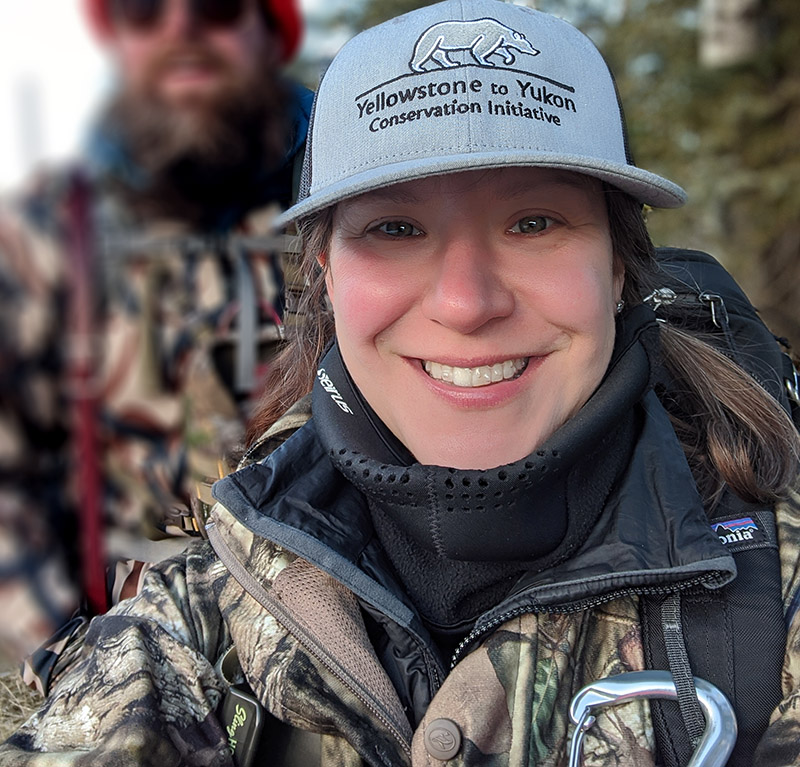
Kelly, Y2Y’s communications and digital engagement manager, on hunting in northwest Alberta:
For me, hunting became a passion because I care about the food I eat. However, it quickly became my favorite way to connect to different parts of Alberta. It is a pursuit I’m improving at each year, but I still have lots of skills to work on.
I love to experience the highs and lows of a day in the field, always learning something, always being in nature. In my life I’ve experienced incredible things, from diving the depths of the Pacific Ocean to climbing the heights of the Rockies but it is the big bush of the northern boreal forest that makes me feel truly small.
Since starting in 2014, I have spent a few seasons hunting mule deer and moose on Alberta’s prairies, but am new to hunting whitetail on Crown land closer to the Yellowstone-to-Yukon region. Last year I did not fill any tags, but even the failure provided an experience like no other.
On frosty mornings waiting for the sun to rise and whitetail bucks to come by, I’ve seen beautiful foxes and tiny voles, walked next to fresh bear tracks, sat as still as possible as a doe and her yearling walked within steps of me, heard a raven fly overhead. I think about these moments anytime I enjoy moose or deer for dinner.
Working to help people have places to go to experience wilderness and have opportunities to hunt is one of the reasons I started working at Y2Y. An ecosystem that is healthy enough to hunt in is a beautiful thing.
I am grateful to the people who have mentored me and taught me what they know so that I can have this experience and the chance to fill the freezer each year. It means even more going into the 2020 hunting season.
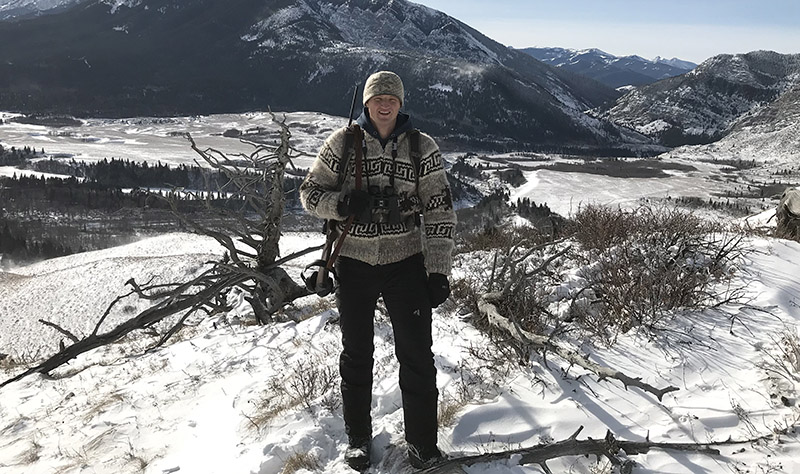
Richard, Y2Y’s Canadian board vice-chair, on hunting Alberta’s Eastern Slopes:
Last year I had just a handful of opportunities to get out, making my way to a wildland provincial park each time. A lot of great opportunities; I tracked two herds of elk on two separate days, but both times was too wiped to take shots.
In addition to the elk, I saw two moose who sauntered by and many mule deer. In the end, success: I carried 60 pounds of whitetail deer meat out — four kilometers by myself since my hunting partner unfortunately injured himself. Can’t wait to go back this year.
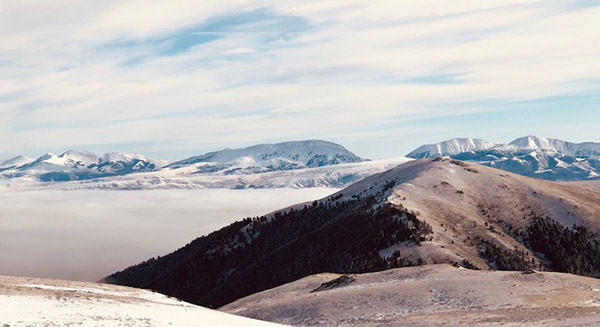
Pat, Y2Y board member, on his time hunting elk and deer in Montana’s Blacktail mountains:
This past season was spent northeast of Dell, Montana, hunting in the middle of the Yellowstone-to-Yukon region’s High Divide landscape. My hunting buddy and I planned to scout elk and deer in an area new to us. Relying on paper maps and various apps, we navigated a rugged system of roads.
We did not see one deer or elk that first trip! In fact, we traveled across a massive stretch of landscape during the day and saw only one other hunter, on foot, at a distance. We did see a peregrine falcon near the top of the mountains at about 8,800 feet sitting on a fence post, and also several black rosy finches.
Driving in early the next morning, just miles from Dillon, I hit the brakes as the headlights flashed on a herd of about 125 elk directly on the road in front of me trapped momentarily, as they waited their turn to leap the fence. Those are the only elk we saw on our trip. But in the end, both of us bagged a whitetail buck.
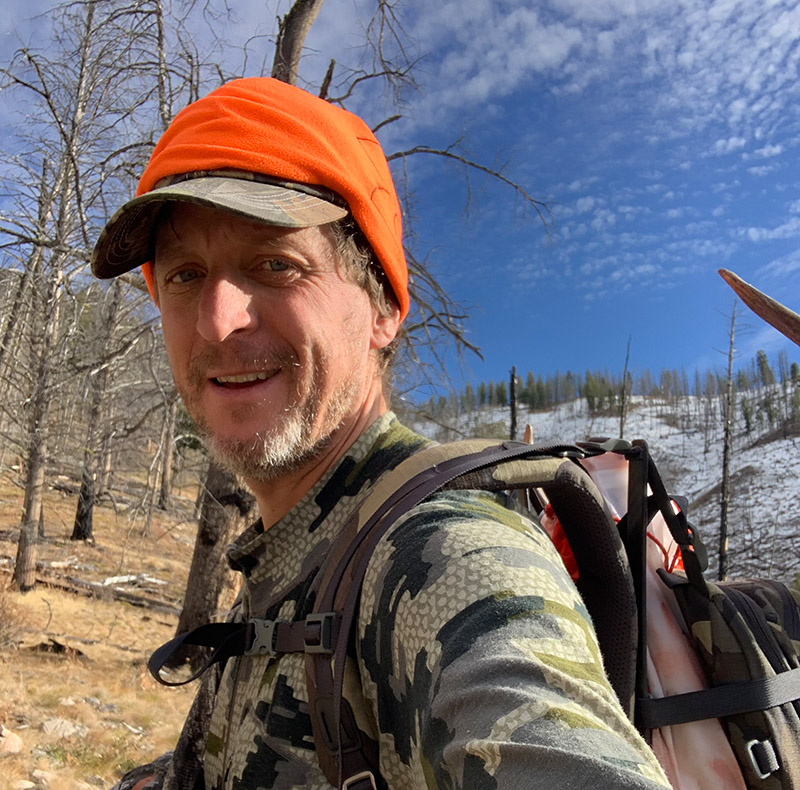
Mark, ecologist and former chair of the Y2Y Foundation, shares his productive season in Idaho:
Each year I look forward to hunting season as a time to get outside, alone for long periods of time, early in the morning, and in wild parts of the Yellowstone-to-Yukon region. There is also a practical side to my pursuit: my family eats mostly wild meat through the year, and as my children grow, so too have their appetites!
I’ve been lucky to hunt caribou with my brothers in the Yukon, deer and elk in Alberta, and here in the U.S., hunting in Idaho and where I live in Montana. Last year I enjoyed five days over opening weekend in far eastern Montana where my friend and I filled a number of ungulate tags between the two of us. But it was a wilderness hunt in Idaho this year that was the most memorable.
After applying, I was lucky enough to draw one of 51 limited entry out of state mule deer buck tags in the coveted Middle Fork of the Salmon in the central Idaho wilderness. It’s an area that is more than 25 miles from the closest road in the largest wilderness complex in the U.S. While it’s busy with rafters in the spring and summer months, it’s relatively quiet all fall and winter.
We flew in and hunted seven days for mule deer bucks in a limited draw area. It was amazing, challenging, and difficult, hunting in the rugged Middle Fork mountains. Every day we left our camp at about 4,000 feet in the dark by the roaring Middle Fork, and hiked up through tough trails, scree, and burns to look for mule deer that were between 6,000 to 8,000 feet up against the snow. Often, I returned to camp long after sunset.
Each day I saw amazing wildlife: healthy abundant populations of mule deer, scattered elk, golden eagles, migratory snow geese, cougar tracks; I heard wolves howl several times and saw a wolf at a distance. It was a privilege to hunt in such a wild part of the Yellowstone-to-Yukon region, and come home with more tasty mule deer meat for my family.
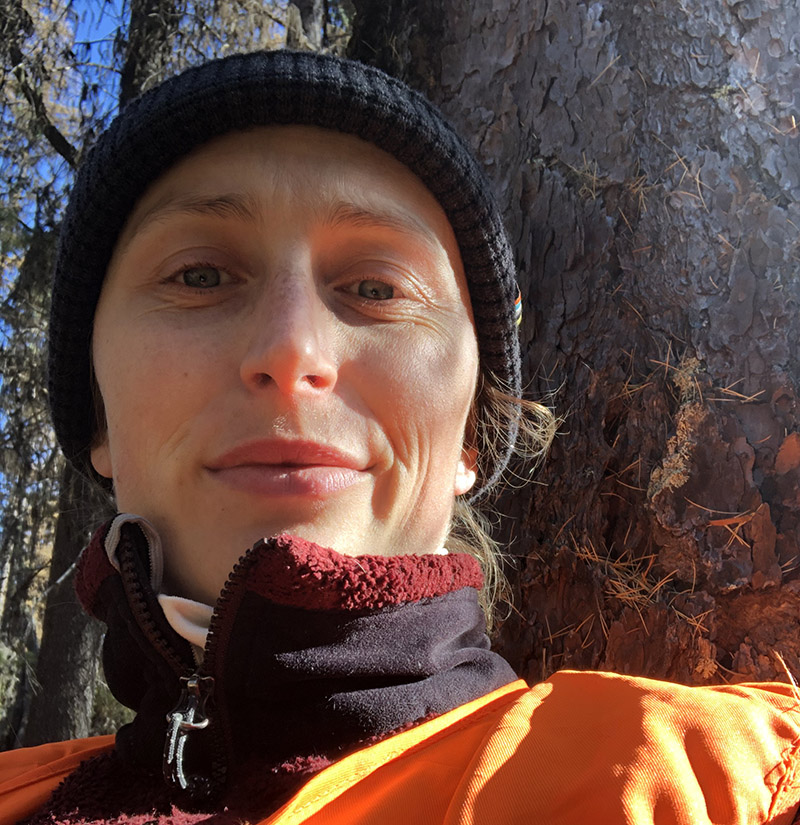
Jessie, Y2Y’s Cabinet-Purcell program coordinator, shares her experiences in northwest Montana:
It was when I moved to Montana from California that I grew interested in hunting. As I fell in love with Montana’s people and landscapes, learning to hunt became, in my mind, an essential element to understanding the way of life for so many of my new neighbors and friends.
The first several years, I just followed friends deep into thick woods looking for deer and elk, and through windswept cattails chasing pheasants. Autumn days of bitter cold fingers and boots breaking through ice in the morning, followed by basking in the sun in a tee shirt in the afternoon was all new to me.
Eventually, I started carrying a firearm, finally owning my own. It was a few years before I took a shot on my first whitetail in a patch of old growth larch in Montana’s Yaak Valley. I was alone, and my heart raced while dressing the animal, glancing over my shoulder every few seconds expecting a grizzly bear to show up. Instead, ravens circled, encouraging me to move along so they could continue the cleanup.
Now, hunting is part of my life, coming and going with the seasons. In the fall, I still hunt deer, sometimes elk if I am feeling intrepid and open to failure. During spring I hunt morel mushrooms with unmatched voracity. In summer, I gather berries, sometimes fish. Hunting is a gift Montana gave me that I will hold dear forever.


